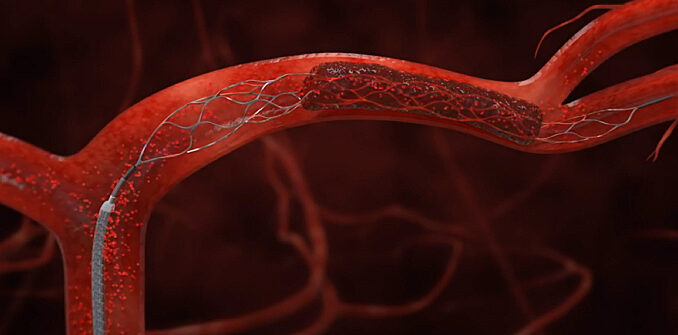5 things you should know about new stroke treatment guidelines

Each year, 795,000 people have a stroke, and 129,000 die as a result, making stroke the fifth most common cause of death in the United States.
Experts agree the faster a stroke is treated, the better the chance for survival and recovery. In other words, time equals brain.
Thanks to a new device — called a stent retriever or “stentriever” — and a procedure called endovascular thrombectomy, patients can have hope for survival and normalcy following a stroke.
Here are five things you need to know about this revolutionary treatment and the new guidelines set in place by the American Heart Association:
- The new guidelines are based upon five consecutive studies in the New England Journal of Medicine within a six-month time span that offered the first evidence in 20 years that endovascular thrombectomy can help people who are having a stroke.
- Patients with acute stroke who undergo endovascular thrombectomy have better outcomes than patients treated with standard care.
- Patients with acute stroke should be transferred as soon as possible to centers that can perform endovascular thrombectomy surgery.
- Patients should be taken to a facility that The Joint Commission has designated a comprehensive stroke center, which are hospitals that have achieved the highest distinction for stroke care and performing endovascular thrombectomy surgery. UF Health Shands Comprehensive Stroke Center is one of only three such centers in the state of Florida.
- Brian Hoh, M.D., UF Health cerebrovascular/endovascular neurosurgeon, was one of the experts on the panel that wrote the guidelines.
“We now have convincing evidence from five prospective multicenter randomized clinical trials that acute ischemic stroke patients who undergo endovascular thrombectomy surgery have significantly better outcomes than patients that received standard care,” Hoh says. “Systems should be created to ensure stroke patients are brought as quickly as possible to centers like UF Health that specialize in these procedures and have achieved the highest distinction in stroke care by being certified by The Joint Commission.”
Learn more about the UF Health Shands Comprehensive Stroke Center and take our stroke risk quiz.